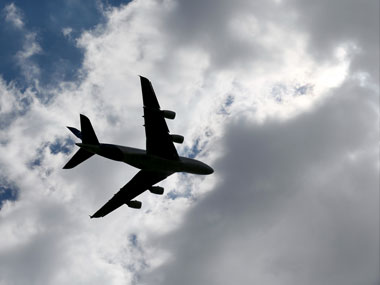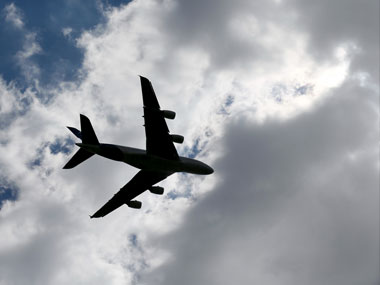New Delhi: It has been almost 48 hours since the New Civil Aviation Policy was cleared by the Cabinet but the incumbent airlines have maintained a deafening silence over its pronouncements. The dilution of the 5/20 rule, which now allows any new airline to begin international operations as soon as it has a fleet of 20 aircraft without waiting for five years, is surely a key irritant for IndiGo, SpiceJet, Jet Airways and GoAir. These airlines have never kept their vehement opposition to any change in the 5/20 rule a secret and have, in fact, lobbied hard against any change under the aegis of the Federation of Indian Airlines (FIA). [caption id=“attachment_2683896” align=“alignleft” width=“380”]  Reuters[/caption] The 5/20 rule was brought in allegedly at the insistence of one powerful full service airline years ago, so that this airline got immunity from competition from desi competitors on lucrative international routes. Now, when all airlines except GoAir fly abroad after having suffered the five-year domestic operations’ condition, they are wary of the might of respected international players like Singapore Airlines, which is a 49% partner in Vistara, and would surely help the new airline’s international spread. International operations are lucrative for airlines since they enable better sweating of assets (utilisation of aircraft) and enable airlines to pick up cheaper jet fuel from abroad. Take the case of Jet Airways, which earns over half its revenues from international operations and may face the maximum impact from 5/20 dilution a few years down the line. Anyway, Indian carriers only account for a third of international passenger traffic from India, it is the foreign carriers which rule this segment. The 5/20 dilution may not change this immediately but will surely impact overseas plans and earnings of Jet Airways, IndiGo and SpiceJet some months hence. It is perhaps a blessing in disguise for the government that the incumbents have maintained a determined silence over the policy instead of criticising it outright. It is clear that Civil Aviation Secretary R N Coubey met chiefs of all airlines early on Wednesday, apprising them about contents of the policy and seeking their cooperation in interactions with the media about the provisions, hours before it was to be taken up by the Union Cabinet. During the press briefing the same evening on the policy, all these people were duly invited to attend but except the top honchos of Vistara and AirAsia India, no airline chief was sighted at the briefing. While it would have been prudent for the government to do away with the regressive 5/20 provision entirely, it has chosen the middle path, trying to please all. Not only are the incumbents miffed, even the two Tata airlines, Vistara and AirAsia India, have been lukewarm in their response. Global aviation consultancy CAPA and several sector experts have criticised this middle-of-the-path approach to 5/20. CAPA says 5/20 rule moving to 0/20 is an “unfortunate compromise. It will not help new carriers like Vistara and Air Asia significantly and India will continue to be a foreign airline driven international traffic regime. Fast tracking expansion by Air Asia and Vistara will not be feasible since the initial capitalisation has been exhausted, operations continue to be loss-making and fast tracking will mean more cash burn.” A source corroborated this saying Vistara will ramp up fleet from 11 to 20 in probably another 18 months so it will be close to three years from inception when the airline actually becomes eligible for overseas flights. AirAsia India, which has only six aircraft now and has been facing funding issues in the past, could well take longer to reach the 20-fleet mark. It is widely expected that the incumbent airlines are currently evaluating options and could well drag the policy to the courts. Not just with the partial removal of 5/20, this middle path approach is also evident in several other provisions of the policy like a gradual opening up of the Indian skies and confining this to countries beyond 5000 km radius. This is actually a non-starter, since India already has an open skies policy with the United States and the UK (with the exception of Heathrow and EU airlines have not been using much of the flights’ quota available. What would have been a game changer? Open skies with countries like Singapore, Turkey, Gulf nations which fall within the 5000 km radius. This is where the demand lies. On another important issue too, the government developed cold feet: raising the FDI cap in airlines from 49% at present. The draft policy had mentioned that 49% could well become above 50% in some years but the final policy document skirts the issue completely as there has been vehement opposition to this clause too from some airlines. Remember, the FIA also exercised about the alleged violation of ‘substantial ownership and effective control’ clause by AirAsia India and has raised the matter in the courts. The bottomilne is, India’s incumbent airlines do not want competition either on international routes or on domestic ones through new airlines springing up. Last but not the least, the Regional Connectivity Policy (RCS) has also not gone down well with the industry. Except for Air India, which is government owned and has to toe the official line, and perhaps SpiceJet, no other scheduled airline may be keen to add a new type of aircraft to its fleet - RCS needs small aircraft. Choubey said after unveiling the policy that many manufacturers of small aircraft have been in touch about the RCS scheme and that states will surely partner the centre in getting more flights into smaller cities, the practicality of these measures remains to be seen. Another point of view is the new non-scheduled operators with smaller aircraft may be attracted to the unserved airports which are the fulcrum of RCS. Already, CAPA has frowned upon the Rs 2,500 fare cap per hour of flying, saying the cost of operations could be over Rs 8,000 for airlines, taking overheads into account. This business of capping fares to enable the aam aadmi to fly may also need some tweaking for RCS operations to become viable. In the end, the flyer on trunk routes will have to bear the brunt of government’s socialist ideas since some sort of cess on domestic tickets (on flights not on RCS routes) is being worked out. This means flying becomes somewhat more expensive for you and me. Given the unhappiness of the industry and even the flyer on major domestic routes over provisions of the Civil Aviation Policy, one wonders if the please-all approach of the government is the right one. India is the fastest growing aviation market in the world but still, only a minuscule proportion of its population flies. Proposals like RCS are thoughtful but lack practical clarity, other aspects of the policy also need some tweaking. The government should have taken a bold first step towards correcting the imbalances plaguing India’s civil aviation sector. It has already thrown up its hands on rationalising taxation on ATF - which is highly taxed and makes the operating environment in India high cost.
The 5/20 rule was brought in allegedly at the insistence of one powerful full service airline years ago, so that this airline got immunity from competition from desi competitors on lucrative international routes
Advertisement
End of Article


)

)
)
)
)
)
)
)
)



